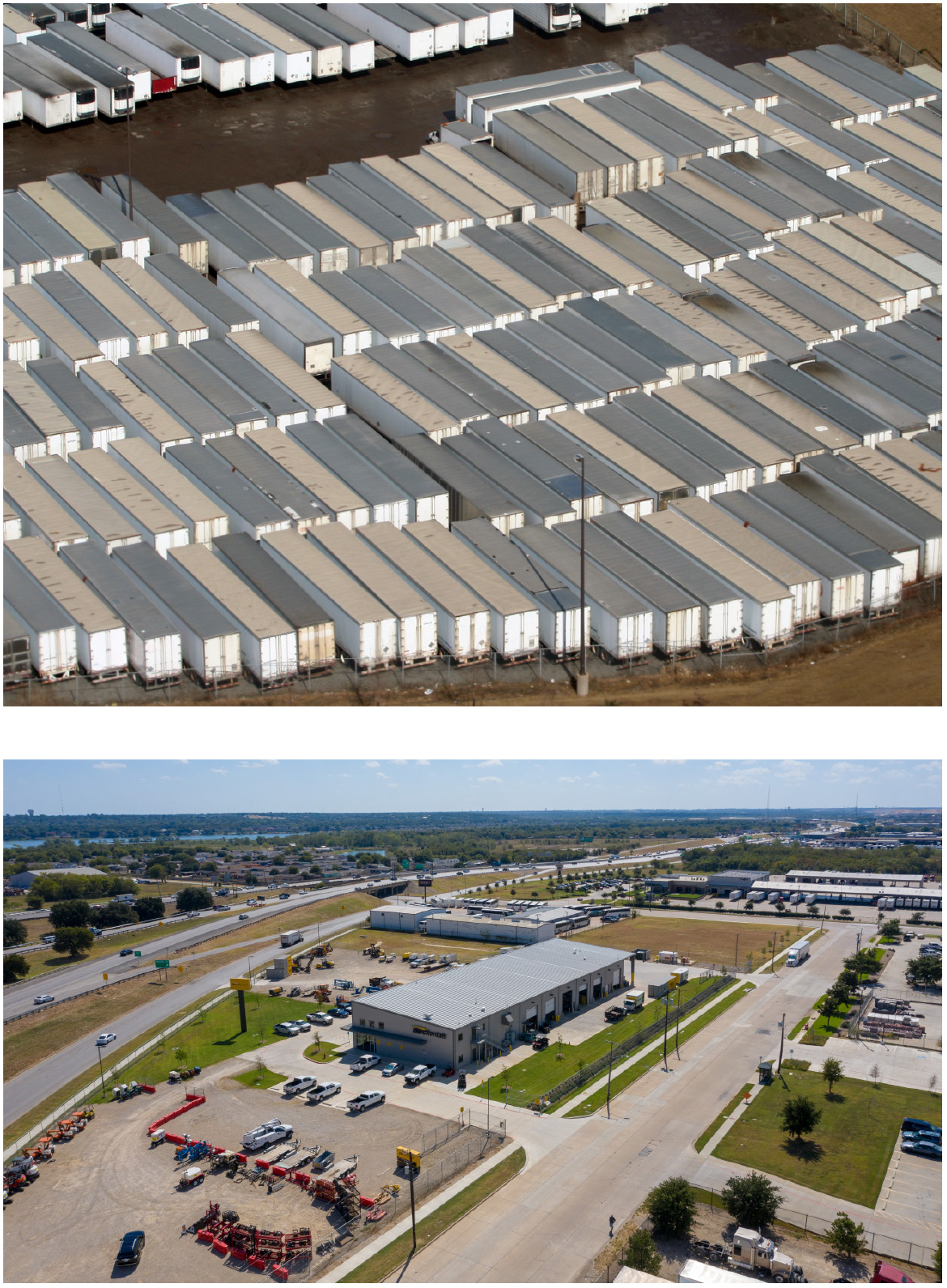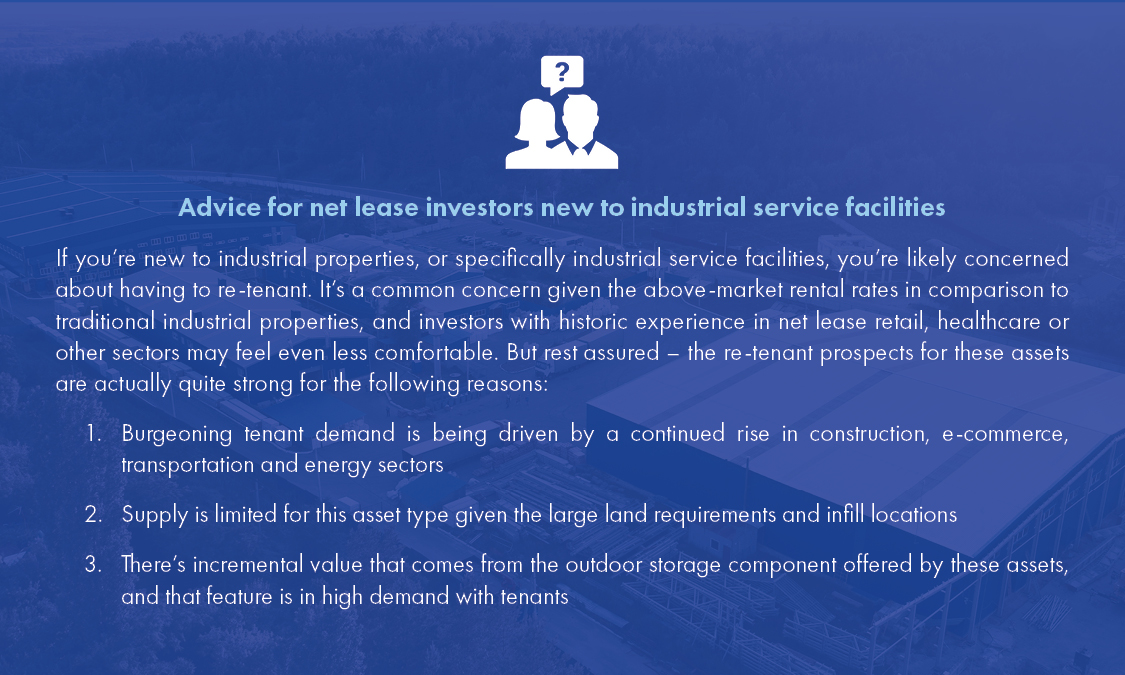Industrial Service Facilities: How Outdoor Storage Adds Value for Tenants and Investors
 Industrial service facilities, also referred to as industrial outside storage properties, are distinguished from more traditional industrial assets in several ways. First, this subset typically has a much lower floor area ratio (FAR) in comparison to warehouse or manufacturing properties. FAR values for industrial service facilities typically don’t exceed 20 percent, whereas more traditional warehouses generally have FAR values greater than 50 percent.
Industrial service facilities, also referred to as industrial outside storage properties, are distinguished from more traditional industrial assets in several ways. First, this subset typically has a much lower floor area ratio (FAR) in comparison to warehouse or manufacturing properties. FAR values for industrial service facilities typically don’t exceed 20 percent, whereas more traditional warehouses generally have FAR values greater than 50 percent.
Another difference relates to property utilization. Users of traditional industrial space are primarily interested in the property’s indoor storage capabilities, placing value on ceiling heights, column spacing, and distribution access through docks and drive-in doors. Users of industrial service facilities, on the other hand, find value not only in the building itself, but also in the storage capabilities of the ground the building sits on. Typical uses for industrial service facilities include equipment storage and maintenance, container yards, bulk material storage and distribution, fleet vehicle storage, as well as trailer parking and drop lots. Properties that can accommodate these unique storage requirements are incredibly attractive to tenants in the equipment rental, trucking, building material supply, shipping container, and oil and gas industries, among others.
A final differentiating characteristic is rent. Industrial service facilities command higher rents per square foot of building area in comparison to their more traditional industrial counterparts. The additional value that tenants derive from the larger outdoor storage component helps drive this increase, and we usually quote rent per square foot of land area as an additional metric when advising clients on transactions involving these properties.
Rents may be consistently higher, but cap rates can vary across the subsector
Cap rates for industrial service facilities can vary widely given the nature of the tenant’s credit profile, the length of the lease term and the intrinsic real estate. While fragmented in terms of the number of tenants, there are a few national companies in the equipment rental sector, for example, that are often sought after by net lease investors, including United Rentals, HERC Rentals, Sunbelt Rentals and H&E Equipment Services. A well-located property leased to one of these tenants on a long-term lease of 10 years or more can easily trade with a cap rate in the low to mid-6.0 percent range.
For non-credit and private-credit tenants, cap rates are higher by as much as 50 to 75 basis points, all else being equal. For non-credit deals, the trading cap rate is largely dependent on other factors including lease terms, quality of the building, location, size of the outdoor storage component, and the ability to achieve replacement rents at or above the current rent level, among other characteristics.
In recent months, we’ve seen an overall slowdown of investment sales activity due to COVID-19, but the pandemic has not had a detrimental impact on pricing trends for industrial service facilities. If anything, investor demand has increased for this unique asset class, and pricing has tightened as net lease investors have pulled away from non-essential retail assets and more capital flows into the industrial sector.
Industrial service facilities are in short supply, making them attractive to investors and tenants
Given the large land components, and oftentimes infill nature of these properties, there is a limited supply of this asset type which results in residual values being greater than traditional industrial properties. The renewal rate for tenants in this property sector is also quite high, due in large part to the constrained supply of similar properties and higher-than-average replacement costs. Many of these properties are primed for future alternative uses, but most landlords find that re-tenanting is simply not an issue. Supply is tight, and tenants in this property sector are benefiting from the e-commerce boom that shows no sign of slowing. This creates a “stickiness” that more traditional industrial facilities sometimes lack and helps keep tenants at their current locations.

Insights
Research to help you make knowledgeable investment decisions